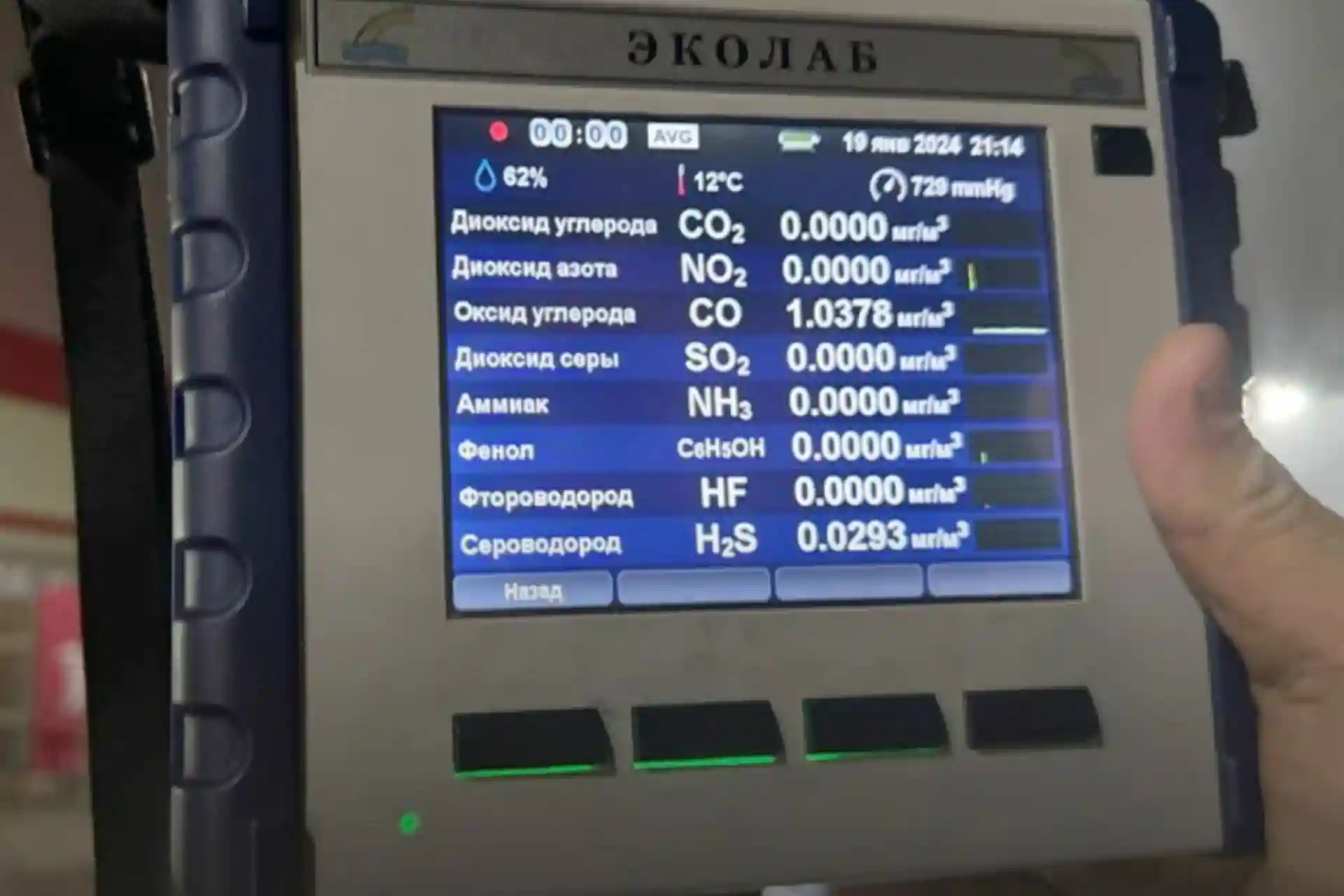More than 3,000 people die prematurely every year due to air pollution in Tashkent — World Bank
The World Bank reported that 3,042 people die prematurely due to the influence of fine dust in the air , and the damage to public health is estimated at 488.4 million dollars . 83% of the population of the capital of Uzbekistan live in highly polluted areas.
Gazeta.uz reports that the World Bank has presented a "roadmap" for assessing air quality in Tashkent and improving air quality management in Uzbekistan. The document analyzes the air situation in the capital and makes recommendations for improving the air quality management mechanism at the national level.
According to the report, one of the main polluters of Tashkent's air is solid fine dispersed particles with a diameter of 2.5 microns (PM2.5). The World Health Organization (WHO) considers them to be one of the most dangerous pollutants for public health. According to the IQAir portal, which is engaged in global monitoring, Tashkent, like many other cities of Central Asia, is regularly included in the list of cities with a high level of air pollution.
The Government of Uzbekistan also recognizes that air quality management is a serious problem that requires joint, comprehensive and interdisciplinary efforts at the local, national and regional levels.
In May 2024 , the Ministry of Health adopted a new PM2.5 standard that is in line with WHO recommendations for indoor air quality. This was an important step towards improving the situation related to air pollution, the document says.
Major pollutants
According to the World Bank, the concentration of PM2.5 particles in the city of Tashkent is high, especially in the winter months, and is much higher than international standards. The average annual level of pollution in the capital is 6 times higher than the level recommended by WHO (6 µg/m3). This seriously harms the health of the population and the economy of the city. According to estimates, air pollution damage can be 0.7% of the country's gross domestic product.
The main sources of PM2.5 air pollution in Tashkent are the heating sector (28%), transport (16%) and industry (13%). 18 percent of the total annual volume of anthropogenic PM2.5 emissions in Tashkent is urban dust and road dust resuspension (the process of re-elevation of small dust particles that previously settled on the road surface) resulting from construction works.
In winter, pollution from commercial and residential heating dominates, while in summer, transboundary pollutants, particularly wind-borne dust (36 percent of all PM2.5 pollution), contribute significantly.
Emissions from transport are quite stable throughout the year. At the same time, urban dust emissions are higher in summer months than in winter, which is due to the activation of construction activities and high responsivity of road dust. In different months of the year, the share of industrial emissions in total emissions is relatively constant.
According to the hourly average PM2.5 concentration data from the US Embassy station, the PM2.5 concentration peaks in the evening (after 8:00 PM) and in the morning (8:00 AM to 10:00 AM). Such dynamics of the hourly concentration of particles may indicate that the concentration in Tashkent is significantly affected by the heating of residential buildings, because the maximum values of the hourly concentration are related to the time when residents are at home (in the evening) or when the ovens are turned on in the morning.
Nighttime maxima in Tashkent are also associated with certain times of the day when the mixing height is low—a feature that causes pollution to accumulate. In addition, the peak PM2.5 concentration observed between 8-10 am may also be influenced by morning traffic.
The analysis of the territorial distribution of waste made it possible to divide the territory into an urban zone and a suburban zone. Most of the emissions related to heating occur outside the urban area, while the main share of PM2.5 emissions from transport and industry is concentrated in the urban area of Tashkent.
The high level of emissions from the housing sector outside the urban area is explained by the lack of centralized heat supply, which forces households to use individual heating sources. According to the Ministry of Ecology, greenhouses located around the city also use coal for heating. Field observations also confirm that solid fuel (coal, biomass) is widely used for heating residential and commercial buildings in the suburbs.
Untimely death
The analysis showed that the average annual concentration of PM2.5 in 39% of cells in the Tashkent city area was lower than the first intermediate target of WHO (35 μg/m3). However, only 17% of the city's population live in these cells, that is, 83% of Tashkent's population lives in 1 sq.m. km. live in cells with high air pollution in the field and serious health effects.
Death caused by the average annual concentration of PM2.5 of 38.8 μg/m3 in the city of Tashkent is 3042 premature deaths per year. The majority of premature deaths associated with PM2.5 air pollution are due to stroke (33%), coronary heart disease (28%) and lower respiratory tract infections (23%).
In addition to the impact of PM2.5 air pollution on annual mortality in Tashkent city, this study assessed the economic impact of PM2.5 pollution-related mortality and morbidity in the city.
Using the average cost of living recommended by IHTT and assuming that morbidity costs account for 10% of mortality costs, the authors estimate the average annual economic costs of PM2.5 air pollution in Tashkent to be $488.4 million. , which is equal to 0.7% of the gross domestic product of Uzbekistan.
This summary assessment of the public health effects of air pollution in Tashkent city was conducted using local data in combination with data on the health effects of air pollution from the Global Burden of Disease (GBU) database.
The report proposed a "road map" for improving air quality, including updating standards and regulations, developing a national strategy for air quality management, and creating a coordinating mechanism to implement these measures. Also, measures to reduce emissions in industry, transport and heating sectors were proposed.
Reducing air pollution in the heating sector can be achieved by improving the quality of fuel, increasing the energy efficiency of buildings and switching to environmentally friendly energy sources. The World Bank recommends providing financial assistance to households, especially vulnerable families, to switch to energy-efficient solutions.
Implementation of these measures, according to experts, will significantly improve the air condition in Uzbekistan and improve the quality of life of the population.
The report was prepared by the World Bank together with the Ministry of Ecology, Environmental Protection and Climate Change of Uzbekistan with the support of the Ministry of Economy and Finance. It is part of a series of studies on air quality in Central Asian countries, aimed at facilitating dialogue with the governments of the region, as well as developing cooperation and knowledge exchange in this area.
On September 19, the president was presented with a program to combat dust storms until 2030, as well as measures to improve air quality in Tashkent. It is proposed to introduce penalties for non-compliance with air protection requirements at construction sites, increase fines for cutting and drying trees, etc.



